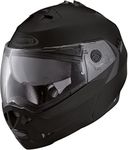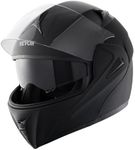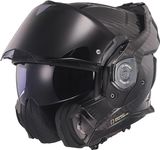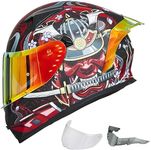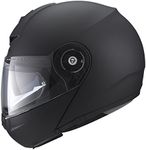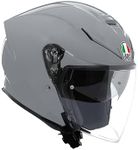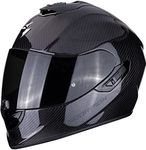Buying Guide for the Best Motorcycle Helmets
Choosing the right motorcycle helmet is crucial for your safety and comfort while riding. A helmet not only protects your head in case of an accident but also shields you from wind, debris, and noise. When selecting a helmet, consider factors such as fit, safety ratings, ventilation, and style. It's important to try on different helmets to find one that fits snugly without being too tight. Remember, a good helmet should feel comfortable for long rides and provide adequate protection.Safety RatingsSafety ratings are certifications that indicate a helmet's ability to protect your head during an impact. Common ratings include DOT, ECE, and Snell. DOT is a basic standard in the U.S., ECE is used in Europe, and Snell is a more rigorous, independent testing standard. When choosing a helmet, ensure it meets at least one of these standards. If you prioritize maximum safety, look for helmets with Snell certification, but remember that all certified helmets provide a basic level of protection.
Fit and ComfortThe fit of a helmet is crucial for both safety and comfort. A helmet should fit snugly around your head without causing pressure points. It should not move around when you shake your head. Helmets come in different shapes and sizes, so try on several to find the best fit. Consider the shape of your head (round, oval, etc.) and choose a helmet that matches. A well-fitting helmet will be comfortable for long rides and provide better protection in case of an accident.
Helmet TypeThere are several types of motorcycle helmets, including full-face, open-face, modular, and half helmets. Full-face helmets offer the most protection, covering your entire head and face. Open-face helmets provide less protection but more visibility and airflow. Modular helmets are a hybrid, allowing you to flip up the chin bar. Half helmets offer minimal protection and are often chosen for their lightweight and style. Choose a helmet type based on your riding style and the level of protection you desire.
VentilationVentilation in a helmet helps keep you cool and comfortable by allowing air to flow through. This is especially important in hot weather or during long rides. Helmets with good ventilation have multiple vents that can be opened or closed as needed. When choosing a helmet, consider how much airflow you need. If you often ride in warm climates, look for helmets with adjustable vents to help regulate temperature and reduce fogging.
WeightThe weight of a helmet can affect your comfort, especially on long rides. Lighter helmets are generally more comfortable and cause less fatigue. However, they should not compromise on safety. Helmet weight varies based on materials used, such as polycarbonate, fiberglass, or carbon fiber. When selecting a helmet, consider how long you typically ride and choose a weight that you can comfortably wear for extended periods without straining your neck.
Noise ReductionNoise reduction is an important feature for many riders, as wind and road noise can be distracting and tiring. Helmets with good noise reduction have features like padded ear sections and aerodynamic designs to minimize sound. If you often ride at high speeds or on highways, consider a helmet with enhanced noise reduction to improve your riding experience. However, ensure that the helmet still allows you to hear important sounds like traffic and emergency vehicles.
VisorThe visor on a helmet protects your eyes from wind, debris, and sunlight. Some helmets come with clear visors, while others offer tinted or photochromic options that adjust to light conditions. Anti-fog and anti-scratch coatings are also beneficial. When choosing a helmet, consider the type of riding you do and the conditions you face. A clear visor is versatile, but if you ride in bright sunlight, a tinted visor or one with UV protection might be more suitable.






